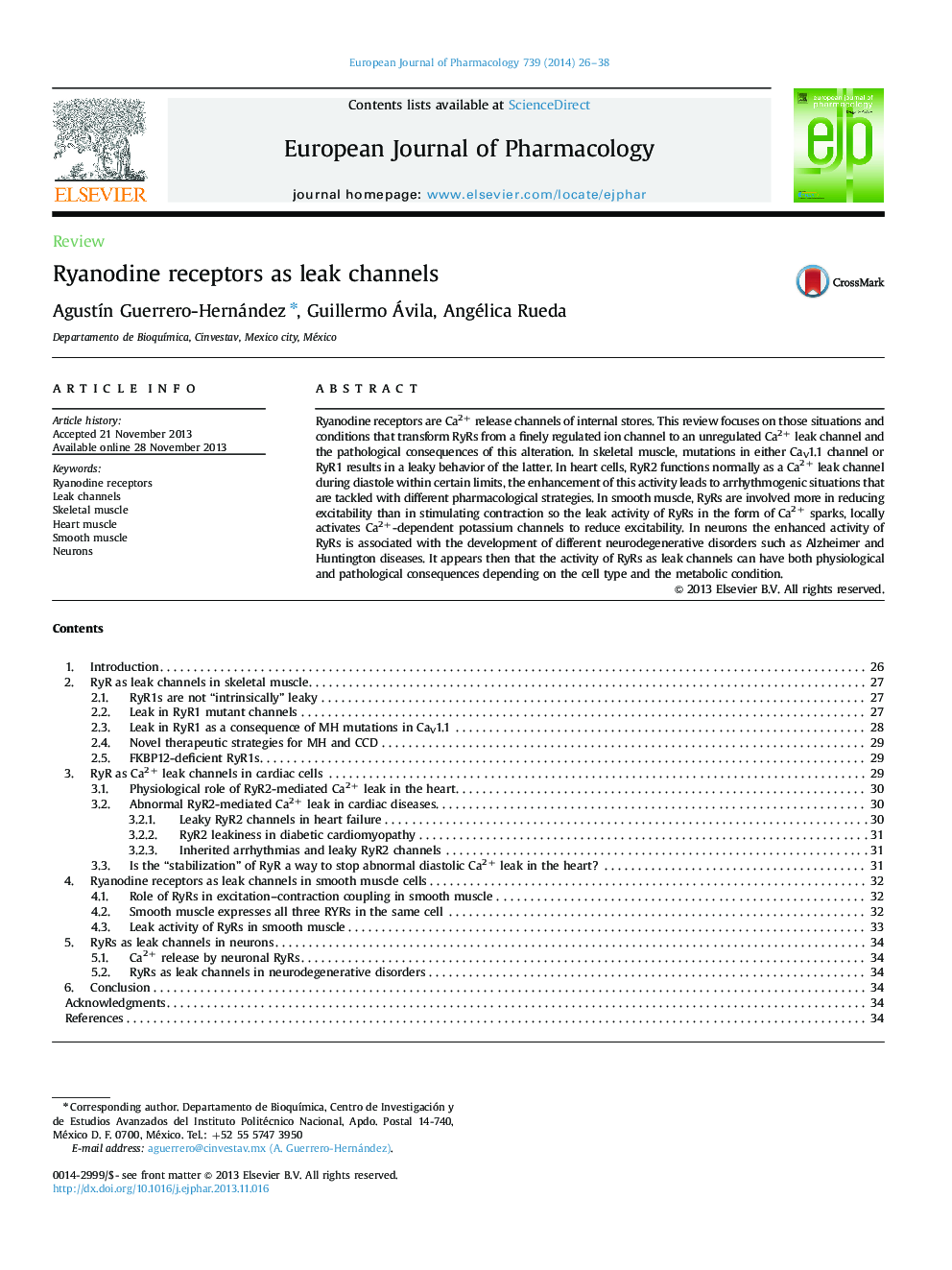| Article ID | Journal | Published Year | Pages | File Type |
|---|---|---|---|---|
| 2531695 | European Journal of Pharmacology | 2014 | 13 Pages |
Ryanodine receptors are Ca2+ release channels of internal stores. This review focuses on those situations and conditions that transform RyRs from a finely regulated ion channel to an unregulated Ca2+ leak channel and the pathological consequences of this alteration. In skeletal muscle, mutations in either CaV1.1 channel or RyR1 results in a leaky behavior of the latter. In heart cells, RyR2 functions normally as a Ca2+ leak channel during diastole within certain limits, the enhancement of this activity leads to arrhythmogenic situations that are tackled with different pharmacological strategies. In smooth muscle, RyRs are involved more in reducing excitability than in stimulating contraction so the leak activity of RyRs in the form of Ca2+ sparks, locally activates Ca2+-dependent potassium channels to reduce excitability. In neurons the enhanced activity of RyRs is associated with the development of different neurodegenerative disorders such as Alzheimer and Huntington diseases. It appears then that the activity of RyRs as leak channels can have both physiological and pathological consequences depending on the cell type and the metabolic condition.
